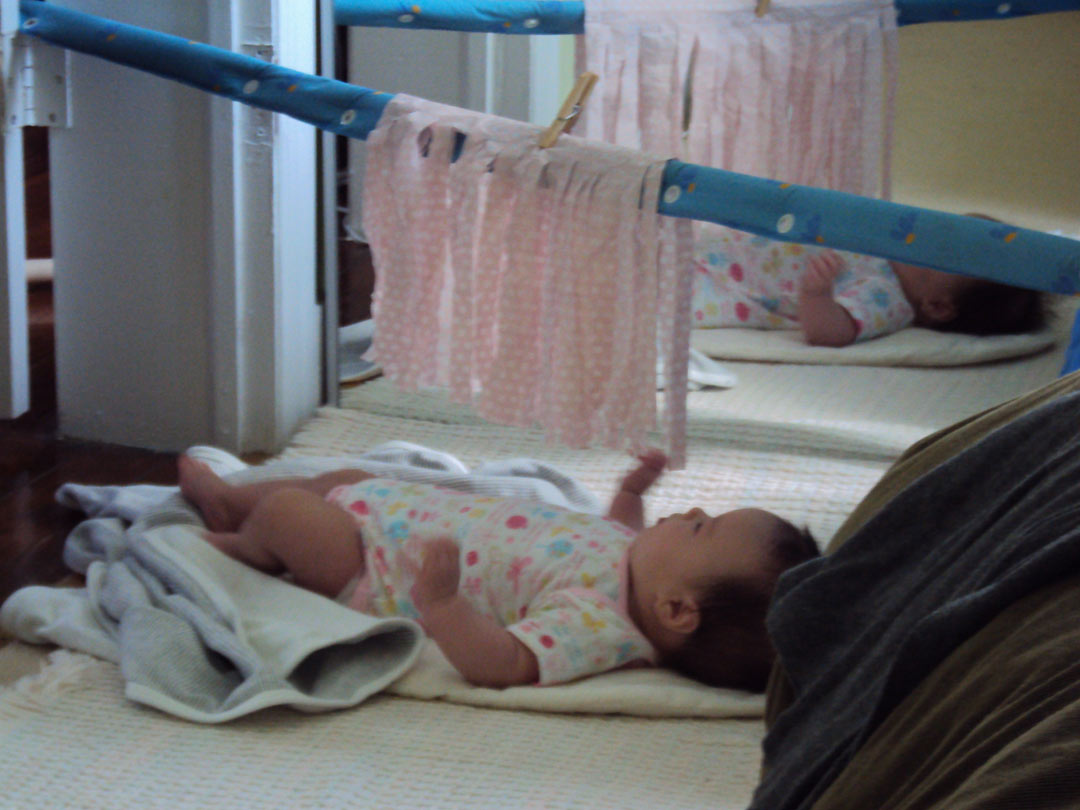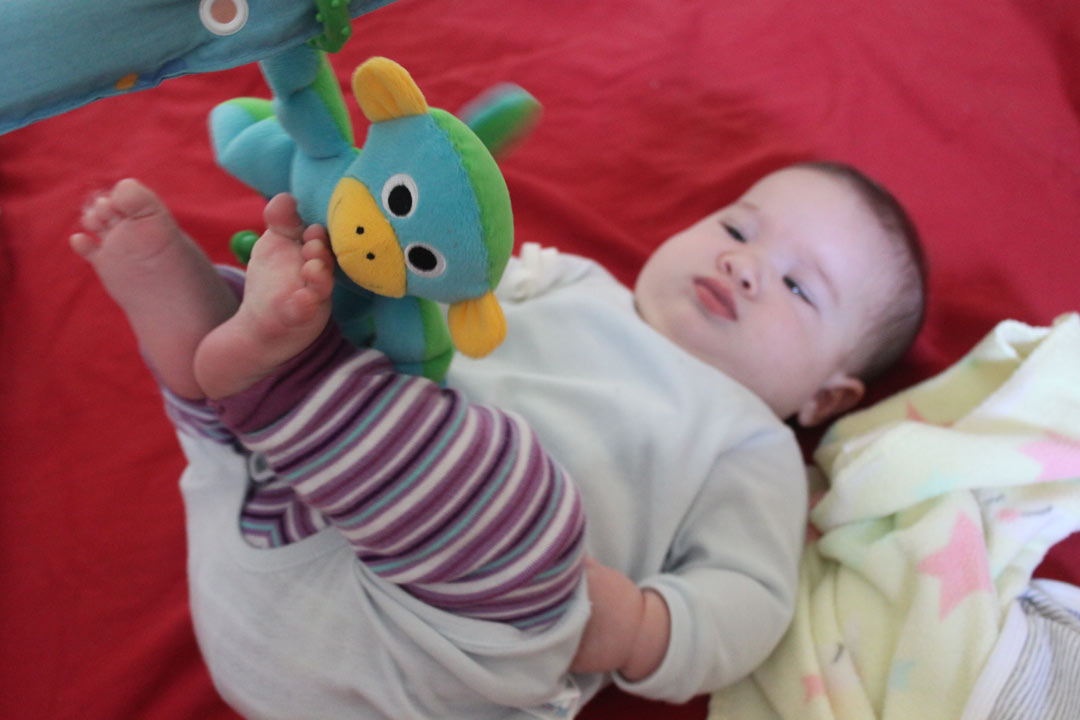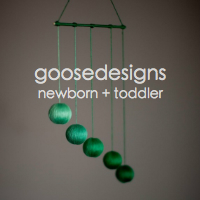The Power Of The Mobile
I’m sure you’ve seen those store-bought mobiles with singing, dancing, blinking animals, princess and cars. You might even have one. Boxes advertise that it stimulates the baby’s vision and hearing, and without my mother’s advice, I most certainly would have bought three.
My mother Ms. Lam says, the infant, who recently came out of the dark, lightless womb, is already over-stimulated by EVERYTHING new, bright and moving around him. Does he really need an electronic device to further stimulate his vision and hearing? Just lying there at home in his crib or on the floor is more than plenty. My brother Alfred told me he bought an electronic mobile when he and Cynthia had their first child. At the time, he thought to himself, “What a great toy, baby Lauren loves it because she stares at it all the time!” It took a lot of education for him to realize she couldn’t help but stare at it all day long, like someone under hypnosis! It’s probably just a couple steps up from putting your baby in front of a TV.
THE PURPOSE OF A MOBILE, I LEARNED, IS TO BE TOUCHED, not just looked at. To achieve this is a big deal for a little baby. It is, like Maria Montessori says, the first time he can affect his environment.
Here are Ms. Lam’s instructions to make the right mobile:
- Mobiles should be SIMPLE
- Use clips to clip things to a rod
- Never put more than ONE THING on it
- When you start, clip something very light that moves slightly on its own
- As the babies grow, make mobiles that won’t move unless they touch it
- Mobiles that ring or make sounds are particularly attractive
- Make mobiles in primary colors: red, blue, yellow. Babies are less interested in things that are silver or gold
- Put a mobile up for 15-20 minutes (or shorter) and take it down when the baby loses interest. If you keep a mobile in her face all the time, she won’t see it at all.
My Implementation
I took some tissue wrapping paper from a baby gift we got. I cut up the bottom so it was stringy and clipped it to the mobile (see picture).
Mackenzie was 9 weeks old was I first showed her. I didn’t get any response from her the first day. The second day, when I put up the mobile, I can tell she was interested. She kept looking at it. Because the tissue paper is so light, it moves every time she breathes, which keeps her interested. Babies notice the tiniest little movements. The first time she reached out to touch the mobile, I was soo excited!!

Brooke’s favorite toy is a small owl plush that has a bell inside its stomach. She was never interested in mobiles when I first put it in front of her, unless I was there playing with her. But a couple weeks later, I remember I left her with the owl mobile as I went about cleaning the house, and suddenly I heard ringing, and I knew she was interacting with the mobile! It’s still her favorite toy at four months.
My girls’ interaction with the mobile has evolved over time. First she starts by looking at it very intently. And then one day, she starts pawing at it. Now, at four months, she will grab it and pull on it. If I want to keep her quiet for 20 minutes to finish the dishes or a conversation, I will leave her lying on her mat with a mobile. When she starts whining, I’ll just change a mobile and she’s good for another 10-15 minutes.
I’ve noticed that multi-dimensional mobiles are the best. I made sure the mobile wasn’t just a plastic toy. I used things that had a smell, made a noise when you touched it (like a crumply piece of paper or a ringing bell), different textures, different colors, etc. It’s important to vary what you give the baby (not just plastic baby stuff), but also things from our everyday surrounding.

Things I’ve used as a mobile
- small colorful plush toys that ring or rattle when you touch it (most successful with my kids)
- a rose (M loved looking at it, especially after I hold it close to her nose)
- a plant twig
- different colored ribbons tied to a rod
- colored paper snowflakes
- a row of yarn balls that go from light yellow to dark yellow
- lemon slices strung up with a string (unsuccessful)
- a row of paper dolls holding hands
- jingle bells bracelet (they liked this)
- origami crane with a bell attached to it
- a small spoon
How to hang a mobile
I learned that mobiles have to be in the right position. Make sure it is hung so that it’s
- high up enough so the baby can see it
- low enough so he can touch it when he reaches out
- doesn’t trail on his body
- a little to the left or the right, which usually works better than straight up
- not hanging above his nose, or else you’ll make your baby cross-eyed!







